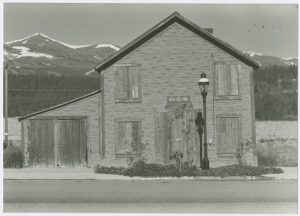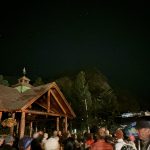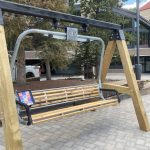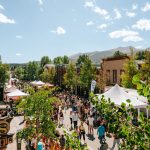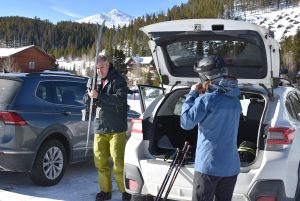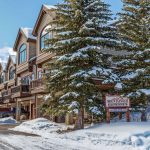A history of Breckenridge’s saloon scene: From the ‘raucous’ mining era through the modern ski industry
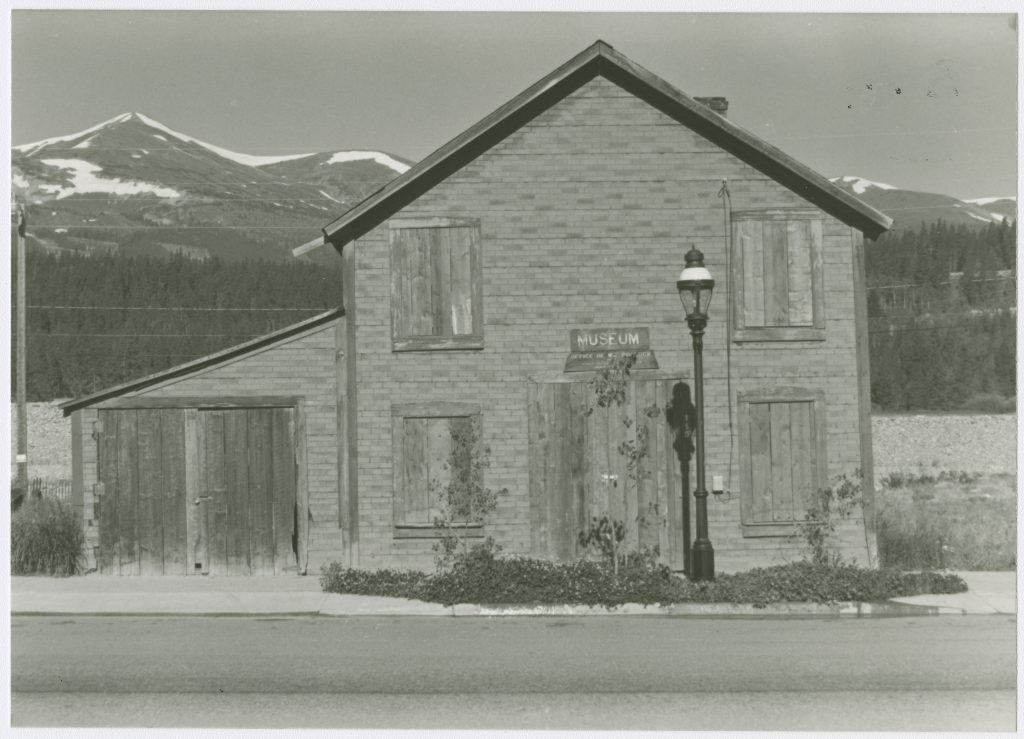
Breckenridge History Archives/Courtesy photo
Walk down Breckenridge Main Street on any given night and people will be coming and going from the town’s many different bars and restaurants.
While Breckenridge has changed a lot since its mining days, the town’s historic saloons offer the possibility to experience a taste of what the social scene may have been like more than 100 years ago when a gold rush brought miners flooding into the area.
“Saloons in our early days of our mining community — and you could probably even say it is true today — were the centers of the community,” Breckenridge History interpreter Leigh Girvin said. “Often the saloon was one of the biggest buildings in these front ier towns. They became gathering places for people coming from all over the place to mine in our area.”
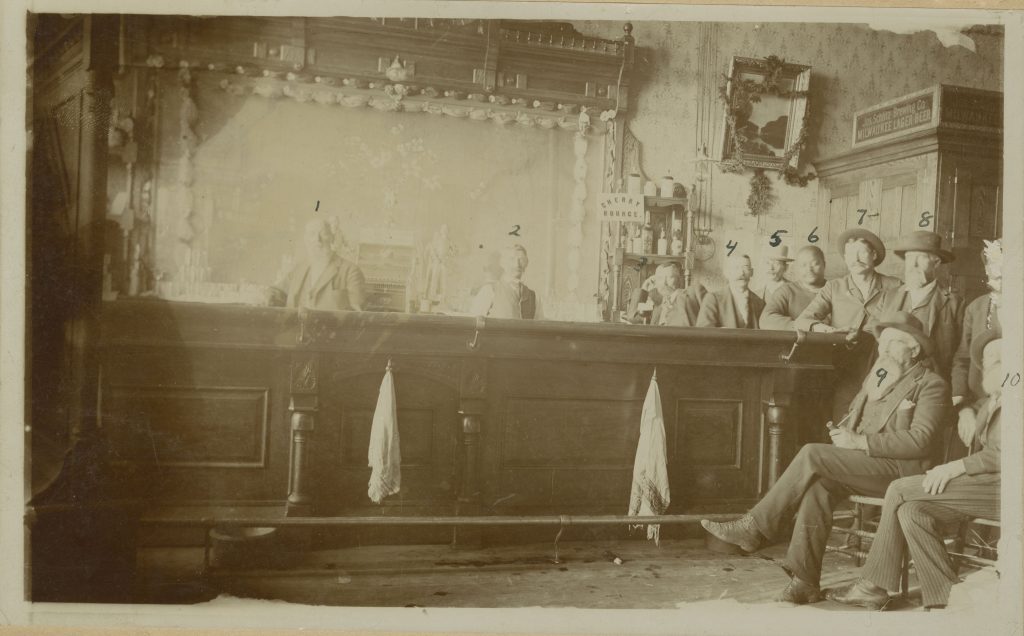
The first saloons
Breckenridge’s history dates back to the late 1850s, when the discovery of gold in the Colorado Rocky Mountains brought thousands of men to the region to mine for gold with the hopes of striking it rich, Girvin said. Gold was first discovered along the Blue River that flows through Breckenridge in 1859, near where the City Market now stands, she said.
With the discovery of gold, the town of Breckenridge began to pop up with settlers from the east building modest log cabins for shelter. But “you can’t eat gold,” Girvin said, so along with the miners came merchants selling food, wares and services.
The most lucrative businessmen in Breckenridge’s early days were “those who mined the miners,” Breckenridge History public engagement manager June Walters said. Saloons were some of the very first businesses to be established in Breckenridge, Walters said, noting that one of her distant relatives owned a saloon on Main Street back in the 1880s.
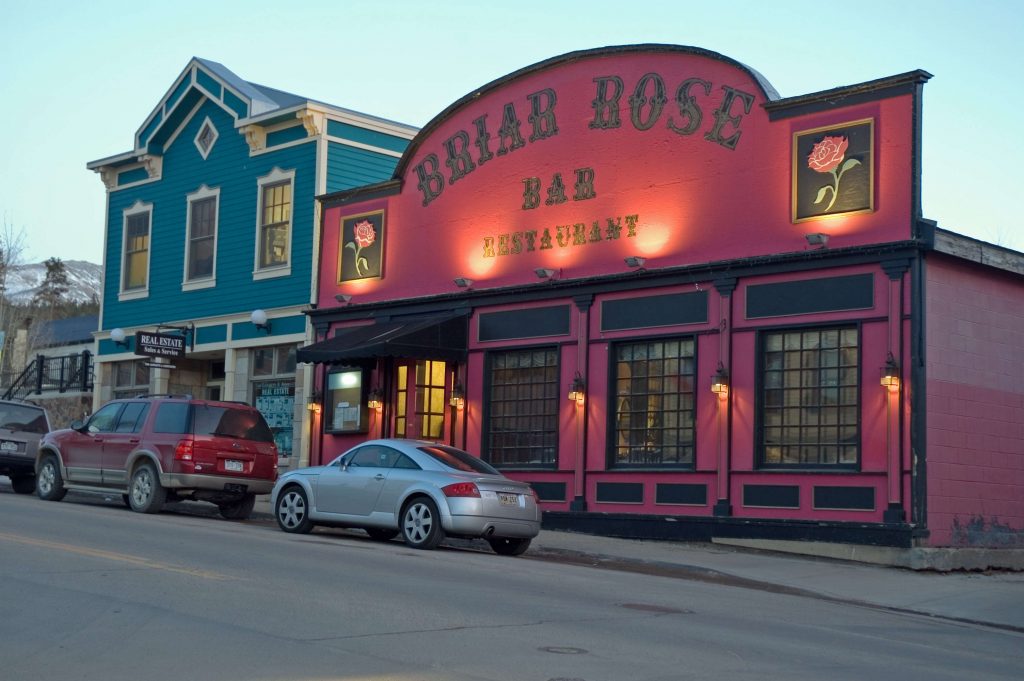
“Gathering spots were essential,” Walters said. “Mining was hard work. They got very thirsty. So there was lots of beer and lots of rot-gut whiskey. It was a very hard place to get supplies. You had to bushwhack it up here. There were no roads. No trains. No nothing.”
The first saloons were likely wagons with “saloon” or “whiskey” written on them, but it was only a few months before saloons established themselves in log structures. Just six months after the first gold strike, the Rocky Mountain News noted wagons and tents as well as “stores, dwellings, shops, and saloons” lining the Blue River.
The whiskey was hauled in on the backs of mules and burros that were strung together, so if one of the pack animals fell, an entire whiskey train could tumble down the mountain, Walters said. For this reason, saloon keepers took to watering down their supply with lye, tobacco juice and pepper, she said. This watered-down whiskey was known as “rot-gut whiskey.”
In the early days, Breckenridge’s “main street” was a “muddy mess,” Girvin said. Visitors are quoted as describing the community as “a motley group of rough individuals” and “hell on wheels,” she said.
The Gold Pan Saloon at 103 N. Main St.: The Gold Pan Saloon is the oldest bar in Breckenridge, Girvin said. It is also the only saloon in town that still has swinging doors. Historians believe that the structure dates back 1880s, or earlier, and it has been a saloon that entire time. While a sign on the building states “Gold Pan Saloon since 1879,” Girvin said that the saloon has not held that name the entire time with a former owner admitting that he made that up for marketing purposes. Today, the Gold Pan Saloon offers breakfast, lunch and dinner as well as happy hour specials and specialty cocktails.
The Breckenridge Tap House at 105 N. Main St. : The Breckenridge Tap House is located in the historic Springmeier building, a log cabin that dates back to the early 1870s, according to Breckenridge History. The Springmeier is “a handsomely built log cabin with dovetail notch corners,” Girvin said. Old newspapers, once used to insulate the building, helped historians pinpoint the age of the building and can still be found on the logs that make up the cabin, she said. The Breckenridge Tap House offers 37 beers on tap, exotic tequilas, vintage whiskeys, worldly wines and gourmet Mexican food.
Fatty’s Pizzeria at 106 S. Ridge St.: Fatty’s Pizzeria is housed in an historic building once owned by the Peabody family, which bought the structure in 1894, according to Breckenridge History. Originally called “The Colorado House,” a sign on the structure still bears that name. Under the Peabody’s ownership, the family made the building into a boarding house with a general store and nine sleeping rooms upstairs. Today, Fatty’s Pizzeria offers lunch and dinner including pizza, sandwiches, salads and pastas as well as a sports bar.
Briar Rose at 109 Lincoln Ave.: While the structure that hosts the Briar Rose is not itself historic, the saloon in the back of the restaurant features an “a gorgeous tiger maple bar back and bar,” Girvin said. “They’ve done a really good job of recreating what the feel of an old saloon might feel like. They have a historic bar back. They have a naked lady painting. They’ve got animal heads. They’ve got dark wood walls. I think you really get the feel for what a more elegant upscale bar would have been like,” she said. The saloon menu includes small plates, quartinos of wine, beer and specialty cocktails.
The first saloons would have had dirt floors and would have served as much more than just a drinking establishment, Girvin said. Dentists would sometimes set up in the corner of a saloon to pull teeth or barbers would cut hair there. Saloons were also a place to exchange news and socialize, she said.
Father John Dyer, a Methodist preacher who also brought mail to Breckenridge, would set up in a saloon, often requiring patrons to listen to a sermon before they could get their mail, Girvin said.
“Talk about a captive audience. Everyone wants their mail. They want news from home,” Girvin said. “They want letters from their loved ones, but they had to listen to Father Dyer’s sermon before they got their mail.”
In “Behind Swinging Doors: The Saloons of Breckenridge and Summit County,” Historian Sandra Mather writes that local officers were elected in saloons, and the drinking establishments served as the first courtrooms where “common sense ruled.”
Gambling was commonplace at saloons, which Mather said made sense because “for miners, life itself was a gamble.” “The big vein was just a shovelful away” and so was “a mining disaster which might kill them one day,” she wrote in her history of Breckenridge’s saloons.
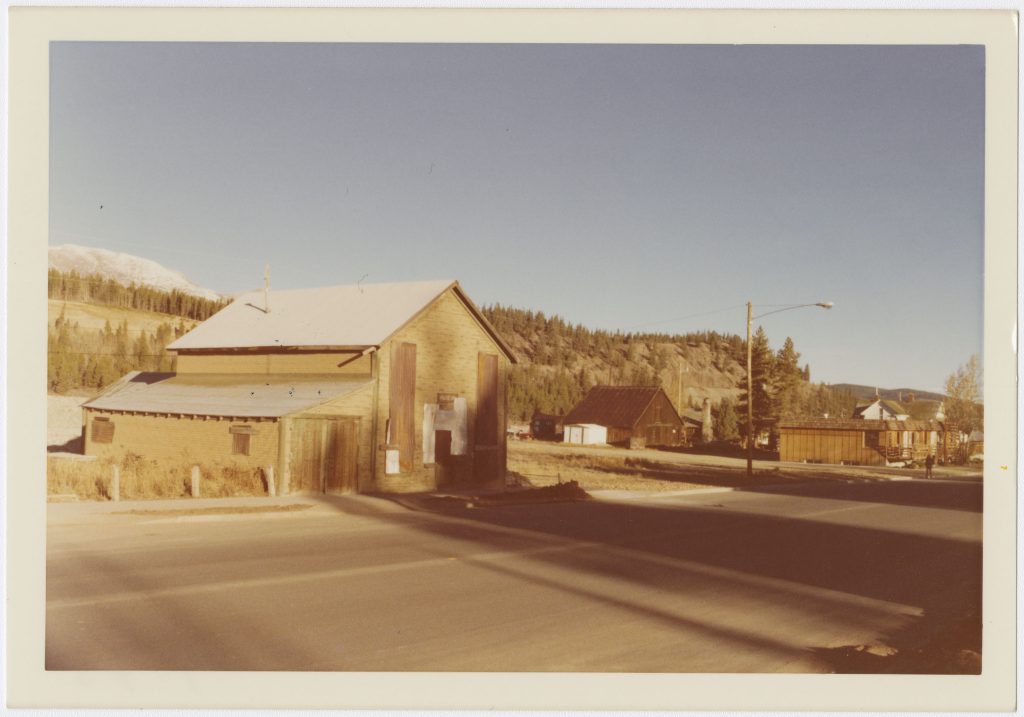
The saloon scene takes off
By the 1880s, the saloon scene in Breckenridge was flourishing. By this time the expanding railways and the introduction of lode mining, where tunnels were dug to extract gold directly from a vein, had brought a renewed interest in mining to Breckenridge.
On the 100 block of South Main Street alone, there were 18 saloons and dance halls, Girvin said. That’s the street where Motherloaded Tavern, Downstairs at Eric’s and RMU Breckenridge currently stand. Essentially every other building was a saloon or dance hall, she said.
“Imagine how raucous that was,” Girvin said. “In those days you’d hear guns going off, men yelling, men fighting. If you have that concentration of that kind of rowdiness in just one block you’re going to have a lot of mayhem going on. Pretty much every other door was a saloon or a dance hall, so it was a loud time, a raucous town.”
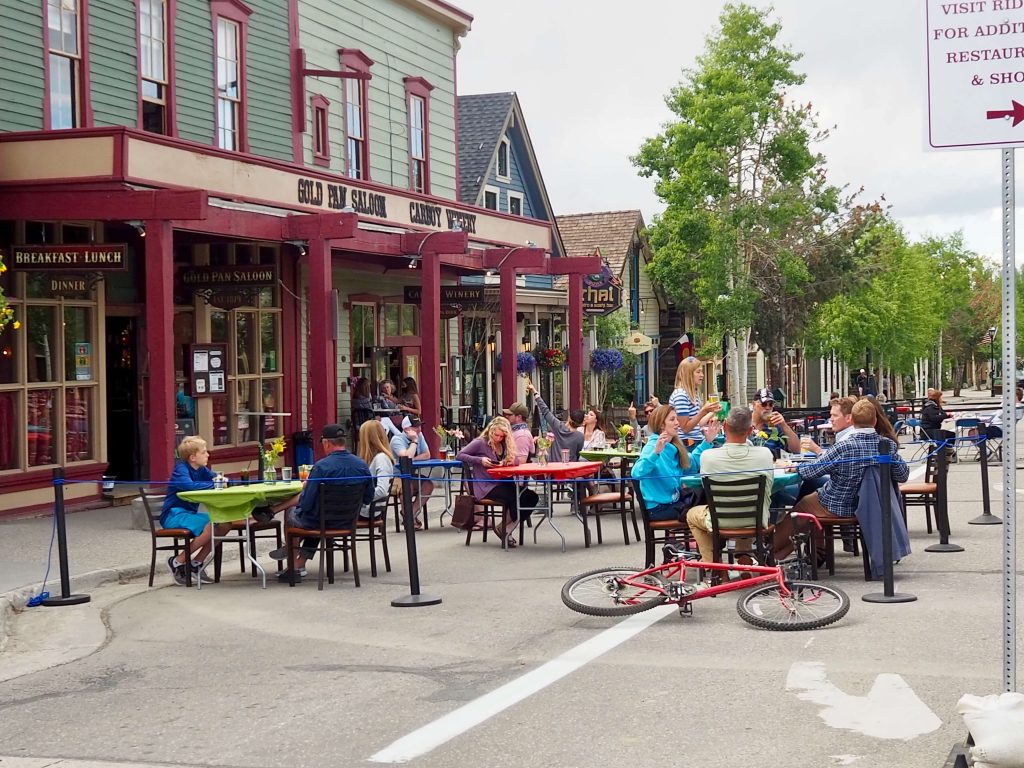
Visitors to Breckenridge can get a sense of this unruly part of the town’s history by joining on one of Breckenridge History’s “Walk Through the Darker History” tours. The 21+ tours are held every Tuesday from 4-5:30 p.m and start at the Breckenridge Welcome Center on South Main Street. The tour, which is not a bar crawl but stops inside a few historic buildings, covers Breckenridge’s saloon lore and the mayhem, murder and goings-on of the town’s red light district.
With the train coming into Breckenridge, the delivery system for whiskey became more reliable and the quality improved, Walters said. During this part of Breckenridge’s mining era, beautiful bars and bar backs, often made of carved mahogany, became common at saloons, she said. Some of those historic bar backs can still be found in Breckenridge, at places like the Briar Rose Chophouse and Saloon.
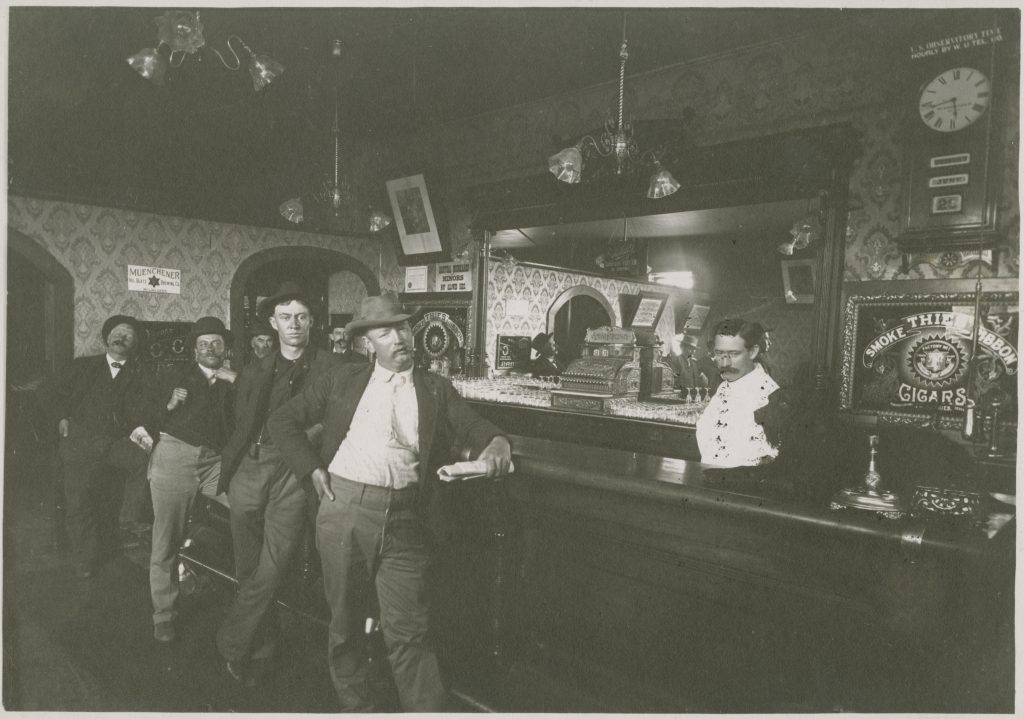
Mining bust to ski boom
By the turn of the century, as trains brought more children and women to the area, the social centers of Breckenridge moved away from saloons, Walters said. Fraternal organizations like the Freemasons and Knights of Pythias became gathering places for men, and those groups’ associated auxiliaries became gathering places for women, she said.
“As the train came in, our atmosphere began to change. More families were here. The establishments were a bit more genteel,” Walters said. “There wasn’t a saloon on every corner as there may have been.”
But saloons never disappeared from Breckenridge. The mining era ended around the time of the Great Depression in the 1930s, and Breckenridge’s population continued to dwindle for several decades. By 1950, only about 500 people lived in Breckenridge.
Locals, though, continued to congregate at a few saloons, like the bar that is today known as the Gold Pan Saloon. Then, in the 1960s, when Breckenridge Ski Resort opened, drawing crowds back to the mountains, the saloon scene picked up again — and continues to this day.
“Oh heavens, the saloons are still going,” Walters said. “It died down during our depression years, after 1942, when mining mostly ended here. But it picked right back up. The saloons picked up again as gathering places after a transitional period in the early 60s when the ski areas opened.”
This story previously published in the summer 2025 edition of Explore Summit magazine.

Support Local Journalism

Support Local Journalism
As a Summit Daily News reader, you make our work possible.
Summit Daily is embarking on a multiyear project to digitize its archives going back to 1989 and make them available to the public in partnership with the Colorado Historic Newspapers Collection. The full project is expected to cost about $165,000. All donations made in 2023 will go directly toward this project.
Every contribution, no matter the size, will make a difference.

